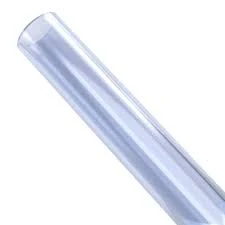ธ.ค. . 14, 2024 17:36 Back to list
HDPE Specification Overview and Key Properties for Material Selection
Understanding HDPE Specifications A Comprehensive Overview
High-Density Polyethylene (HDPE) is a widely used thermoplastic known for its strength, durability, and versatility. It plays a crucial role in various applications, ranging from packaging and containers to piping and geomembranes. To fully grasp the capabilities and limitations of HDPE, it is essential to delve into its specifications, commonly provided in a spec sheet. This article will explore the key aspects of HDPE specification sheets, what the information means, and how to interpret it for practical applications.
What is HDPE?
HDPE is a type of polyethylene characterized by its high density, which results in a material that is stronger and more resistant to impact compared to its low-density counterpart. This enhanced structure makes HDPE suitable for a wide array of uses, such as plastic bottles, milk jugs, and piping systems. Its chemical resistance also contributes to its popularity in various industries, including food and beverage, construction, and agriculture.
Key Components of an HDPE Specification Sheet
1. Material Properties The specification sheet typically begins with fundamental properties such as density, melt flow index (MFI), tensile strength, and elongation at break. - Density HDPE generally has a density range of 0.941 to 0.965 g/cm³, which is essential for determining its suitability for specific applications. - Melt Flow Index (MFI) This indicates the flow characteristics of the resin when melted. A lower MFI signifies a higher molecular weight, resulting in greater strength. - Tensile Strength Generally measured in megapascals (MPa), this indicates the maximum amount of tensile (stretching) stress that HDPE can withstand before failing.
2. Thermal Properties Thermal properties include melt temperature and glass transition temperature. These values define the processing conditions for HDPE and its thermal stability during use. For instance, HDPE typically has a melting point between 120°C and 180°C, which is critical for applications involving heat.
3. Chemical Resistance HDPE is known for its resistance to many chemicals, including acids, bases, and alcohols. The specification sheet may outline specific chemicals and their concentrations that HDPE can withstand, making it essential for applications in chemical handling and storage.
hdpe spec sheet

4. Color and Additives While natural HDPE is generally opaque and milky in appearance, various additives can alter its properties and colors. The specification sheet may indicate whether the resin contains additives for UV stabilization, fire retardancy, or anti-static characteristics.
5. Mechanical Properties Mechanical properties, including impact resistance, hardness, and flexibility, give insight into how the material behaves under various stresses. - Impact Resistance This property is crucial for applications exposed to potential physical stress, such as outdoor storage tanks or playground equipment. - Flexural Modulus This measures the stiffness of HDPE and is particularly important for load-bearing applications.
6. Regulatory Compliance Many HDPE specification sheets include information about compliance with safety and regulatory standards, such as those set by the FDA for food contact applications or environmental regulations.
Application Considerations
When selecting HDPE for a particular application, it is vital to consider the specific requirements as outlined in the spec sheet. Notably, factors such as environmental conditions, mechanical loads, and potential chemical exposures will influence the choice of HDPE grade.
For instance, in the construction industry, HDPE is often used for drainage systems and geomembranes, where its water-resistant properties and durability are essential. In contrast, packaging applications may prioritize clarity and lower thickness, leading to different HDPE grades.
Conclusion
HDPE is a versatile and robust material that has garnered widespread acclaim across various industries. Understanding the specifications provided in HDPE spec sheets is crucial for making informed choices in material selection and application. By thoroughly analyzing mechanical, thermal, and chemical properties, manufacturers and engineers can ensure optimal performance and compliance in their specific applications. As industries continue to evolve, the relevance of HDPE, supported by its comprehensive specification sheets, will only grow in importance.
-
HDPE Natural Sheet: Durable, Food-Grade & Versatile Plastic Solutions
NewsAug.27,2025
-
Durable Glossy PVC Rigid Sheet | Premium High-Shine Panels
NewsAug.26,2025
-
Durable PP Rigid Sheet: Lightweight, Chemical Resistant Solutions
NewsAug.21,2025
-
PVC Grey Sheet for Extraction: Chemical Resistant & Durable
NewsAug.19,2025
-
Durable PVC Pipe Fittings for Plumbing & Irrigation Needs
NewsAug.18,2025
-
HDPE Steel Belt Reinforced Spiral Corrugated Pipe | High Strength
NewsAug.17,2025

